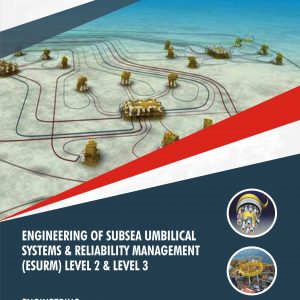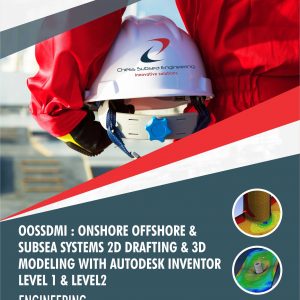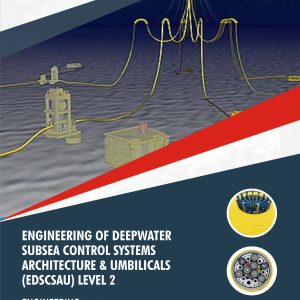Description
The Offshore Structures Reliability Engineering (OSRE) Level 1 & Level 2 course provides participants with a comprehensive understanding of reliability engineering principles as applied to offshore structures. The course covers topics such as risk assessment, reliability analysis, and maintenance strategies for ensuring the safety and performance of offshore structures.
The Level 1 course introduces participants to the fundamentals of offshore structures reliability engineering. It covers key concepts such as probability theory, reliability modeling, and failure modes and effects analysis (FMEA). Participants will learn how to assess and quantify the reliability and safety of offshore structures.
The Level 2 course builds upon the knowledge gained in Level 1 and focuses on advanced reliability engineering techniques for offshore structures. It covers topics such as advanced risk analysis, fault tree analysis, and maintenance optimization. Participants will learn how to identify and mitigate potential failure modes, optimize maintenance strategies, and enhance the overall reliability of offshore structures.
Throughout the OSRE Level 1 & Level 2 course, participants will engage in practical exercises and case studies, allowing them to apply the learned concepts to real-world offshore engineering scenarios. The course emphasizes the application of reliability engineering principles to improve the safety, performance, and longevity of offshore structures.
By completing the OSRE Level 1 & Level 2 course, participants will acquire the necessary skills to assess the reliability and risk associated with offshore structures. They will be able to identify potential failure modes, evaluate the impact of uncertainties, and develop strategies to enhance the reliability and safety of offshore structures. The course aims to develop professionals who can contribute to the design, operation, and maintenance of offshore structures with a strong focus on reliability and risk management.
Offshore Structures Reliability Engineering (OSRE) Level 1 & Level 2 covers Offshore & Subsea Engineering, Subsea Production Systems, Flow Assurance and System Engineering, Subsea Structures and Equipment, Subsea Umbilicals, Risers, and Pipelines, Causes of failure, Failure Rate Bath Tub Model, Reliability Theory, Reliability Evaluation Techniques, Reliability, Availability and Maintainability (RAM), Mean Time Beteen Failure (MTBF), Reliability Management and more.
Course Outlines
History of Offshore & Subsea Engineering
Subsea Production Systems
Flow Assurance and System Engineering
Subsea Structures and Equipment
Subsea Umbilicals, Risers, and Pipelines
Failure
Causes of failure
Failure Rate – Bath Tub Model
Reliability Theory
Reliability Evaluation Techniques
Reliability, Availability and Maintainability (RAM)
Subsea System Integration Testing (SIT)
Mean Time Beteen Failure (MTBF)
Reliability Management
Case Study 1: FMEA of FPSO Ballast Tank
Case Study 2: Event Tree Analysis of Dropped Object from an FPSO
Case Study 3: Fault Tree Analysis for Major Leak from Subsea Xmas Tree
Assessment
Participant underpinning knowledge of Offshore Structures Reliability Engineering will be accessed with short answer multiple-choice questionnaire at the conclusion of the course.
Outcome
Participants will gain an in debt understanding of Offshore Structures Reliability Engineering at Level 1 & Level 2. They will also be able to function with minimum supervision as Reliability Engineer for IOCs, subsea pipeline company contractor, vendor or installation company.
Professional Certificate
Issued directly by Chess Subsea Engineering Europe.
Participant may be presented for Offshore Petroleum Training Organization (OPITO) Certification.
How to Register
Click here to download registeration booklet on msword and email completed booklet to info@chesssubseaengineering.org directly.










